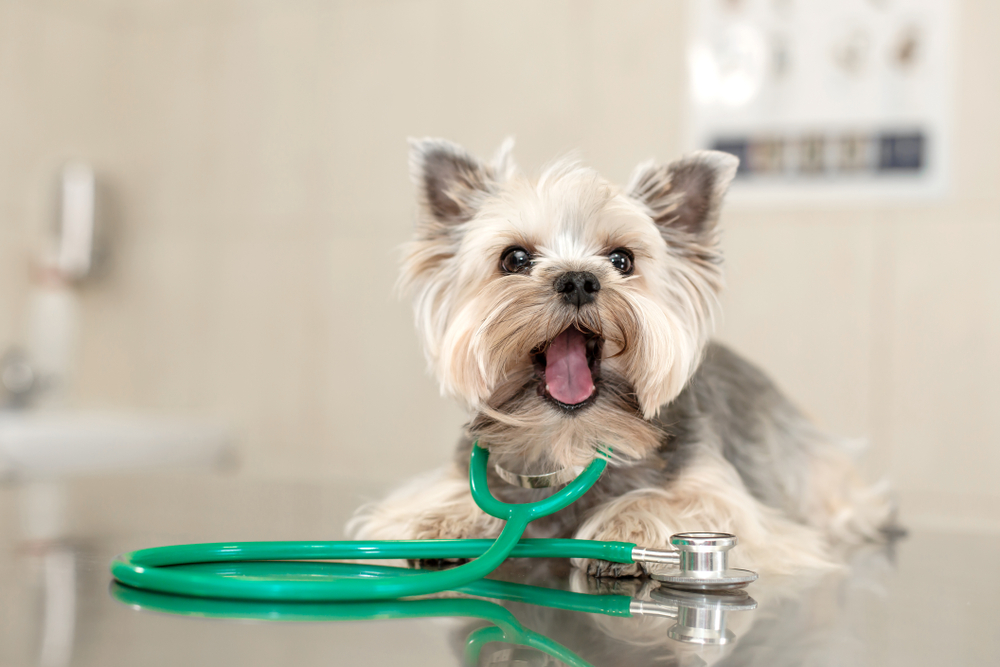If you have a dog or cat who is fearful, anxious, or stressed during veterinary visits, the veterinary team may have recommended that you give your pet a PVP, or pre-visit pharmaceutical. These are medications that may be used in addition to training or behavior or environmental modifications to treat fear, anxiety, or stress associated with veterinary visits.
When you have a pet who is fearful, medication can help to make veterinary visits more likely to be successful. The medications are intended to address specific neurotransmitters associated with fear, anxiety, or stress related to the veterinary setting. The goal is to help make your pet’s veterinary visit more enjoyable and less stressful. Medications can help to reduce stress and anxiety so the veterinary team can work to change the way your pet feels about specific procedures such as being handled or receiving a vaccination.
I Don’t Want to Drug My Pet
Giving an animal a medication with the intent to sedate or to slow down reaction time in order to address aggression or anxiety in the veterinary hospital is inappropriate. That’s not what is being recommended by your Fear Free veterinary team. The veterinary team wants to reduce fear, stress, and anxiety so your pet can receive lifelong care without concern. If this is not addressed, your pet may continue to have negative associations with the veterinary team and may be limited in the amount of medical care received.
PVPs are never recommended alone without training, behavioral, or environmental modification. Your veterinary team will discuss how to conduct medication trials at home and will schedule Victory Visits for your pet to trial the medications prescribed.
PVPs and How They Work
Many different medications can be used to reduce your pet’s fear, anxiety, and stress. For canine patients, the following medications may be suggested:
- Alprazolam
- Clonidine
- Gabapentin
- Trazodone
For feline patients, options include the following:
- Gabapentin
- Trazodone
- Lorazepam
All these medications are used “off label” in dogs and cats. This means the FDA has not approved these medications for use in dogs and cats. This may raise a red flag, but the medications listed above have been documented, studied, and practiced in veterinary behavior literature and in veterinary practices for years and are considered safe for use. Side effects to watch for with any of these medications are increased lethargy, vomiting, diarrhea, or changes in appetite. With any anti-anxiety medication there is the risk of disinhibition of aggression (loss of conscious control of the aggression response) or paradoxical excitement (in which the patient experiences the reverse effect of the medication).
Most of the medications listed above are known as “quick” acting. This means that once the medication is given it will take one to two hours to see the full effect. For most patients, the medication is in and out of the system in eight to 12 hours. It is a good idea to trial the medication at home first and report the effects to the veterinary team so they can assess the animal for possible side effects or negative responses. Your veterinary team will want to know three pieces of vital information:
- Amount of time before the medication takes effect in your pet
- Effects seen (less barking out the window, for instance)
- How long the effects lasted (returned to normal behavior after 7 hours)
Using PVPs
Once you document this information, call the veterinary team and discuss your findings. They can then advise you on the next steps and potentially set up a Victory Visit to assess how your pet responds to the medications in a veterinary setting.
Your veterinary team cares greatly about your pet’s wellbeing: the state of being comfortable, healthy, and happy. This means that while we are trying to keep your pet healthy medically, we cannot ignore the signs of unhappiness such as fear, stress, and anxiety that are present while your pet is in our care. The goal of using PVPs is to improve your pet’s wellbeing at the veterinary hospital so we can keep him happy and healthy for as long as possible.
This article was reviewed/edited by board-certified veterinary behaviorist Dr. Kenneth Martin and/or veterinary technician specialist in behavior Debbie Martin, LVT.








